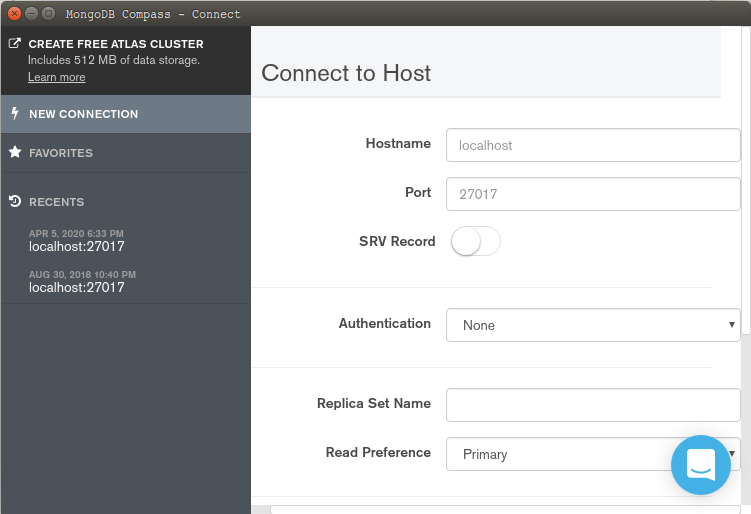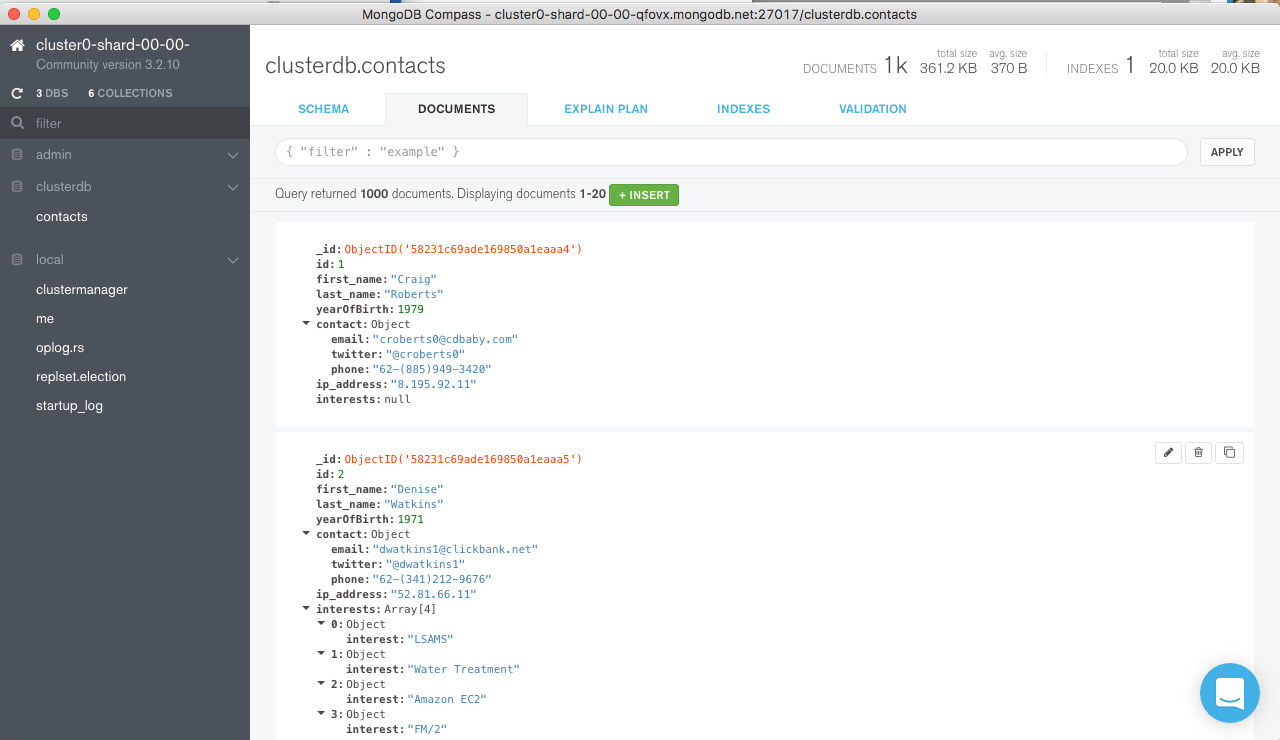

- MONGODB COMPASS RENAME COLLECTION HOW TO
- MONGODB COMPASS RENAME COLLECTION LICENSE
- MONGODB COMPASS RENAME COLLECTION PLUS

Suppose we run the following query against a pets collection: db.pets.find(). In this case, use dot-notation to refer to the field that you want to rename. In the following examples, we are working with:ĭocument: three documents that contain the details of the employees in the form of field-value pairs. You can use the same method to rename fields in embedded documents. To specify field in embedded/nested documents with the help of dot notation. Here, newName is the new name and it must be different from the existing name of the field. If the specified field for renaming is not available, then this operator will do nothing.You can use this operator in methods like update(), findAndModify(), etc., according to your requirements.In embedded/nested documents, this operator can rename the specified field as well as move the fields in and out of the embedded documents This operator can also work with embedded/nested documents or arrays.Compass provides everything from schema analysis to index optimization to. Easily work with your data in Compass, the GUI built by and for MongoDB. Get key insights, drag and drop to build pipelines, and more. If the document contains the field with the new name, then this operator will remove that field and renames the specified field to the new name. Compass is an interactive tool for querying, optimizing, and analyzing your MongoDB data.$rename operator logically first performs an $unset operation on both the old name and the new name and then performs an $set operation with the new name.Mongoose | findByIdAndDelete() Function.


Using the drop method, the collection and their indexes will be deleted from the database server. If we want to drop the whole collection and its indexes, then we can use the drop method to drop any collection from the database.
MONGODB COMPASS RENAME COLLECTION HOW TO
How to build a basic CRUD app with Node.js and ReactJS ? We can delete the collection in MongoDB by using two methods.MongoDB - Check the existence of the fields in the specified collection.Mongoose | findByIdAndUpdate() Function.Upload and Retrieve Image on MongoDB using Mongoose.ISRO CS Syllabus for Scientist/Engineer Exam.ISRO CS Original Papers and Official Keys.GATE CS Original Papers and Official Keys.How does this method work? Instead of using db.copyDatabase(), you use mongodump to dump out the database you want to rename. This method can be used to rename a database on the same server or as part of a migration to another server, replica set or sharded cluster. After all, mongodump/mongorestore are designed to backup any type of MongoDB database. This method also works when run against a mongos and with a sharded collection. It is also the only recommended and available method for MongoDB 4.2 onwards. This method works better when you have to rename a database in MongoDB. You can still use it if you’re running older versions of MongoDB, but I would recommend moving to the second method described below as soon as possible Renaming a database in MongoDB using mongodump and mongorestore However, I tend to prefer the second method of copy/renaming a database, especially as it doesn’t come with a ton of caveats regarding sharded clusters.Īll that said, db.copyDatabase() has been removed from MongoDB 4.2 as the underlying copydb command was removed. The documentation for db.copyDatabase() also mentions that you can also use this function to copy the database to a remote server and rename it at the same time. So overall, yes, you can use it to simulate renaming a database in mongoDB, but only for a very specific subset of use cases.
MONGODB COMPASS RENAME COLLECTION LICENSE
Also, you can’t use copyDatabase on a sharded cluster or via mongos. Powered by a free Atlassian Jira open source license for MongoDB. Overall, this is a pretty expensive operation.
MONGODB COMPASS RENAME COLLECTION PLUS
db.copyDatabase( "Activatd", "Activated")ĭownsides? Well, I already mentioned the storage requirements, plus the copy operation also has to recreate all indexes on the new database.


 0 kommentar(er)
0 kommentar(er)
